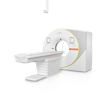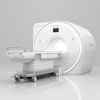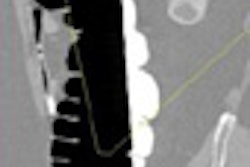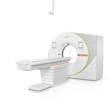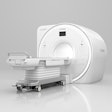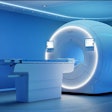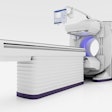CHICAGO - It's not just so-called weekend warriors who are prone to injury: professionals who perform repetitive tasks every day of the week are vulnerable to stress on their bodies as well. And radiologists, particularly those working in a PACS-based environment, are not exempt.
"In all occupations across the board, about one in three work-related injuries are related some kind of repetitive use," said Dr. Phillip Boiselle, co-director of the residency program in the department of diagnostic radiology at Beth Israel Deaconess Medical Center (BIDMC) in Boston and associate professor of radiology at Harvard Medical School, both in Boston. "And within medical occupations, radiologists are at high risk. But the actual prevalence of repetitive stress-related symptoms and injuries is unknown."
Boiselle and colleagues found that although radiologists are just as susceptible to repetitive stress-related injuries, like many other workers affected by this kind of problem, they respond to ergonomic solutions. Boiselle presented his findings at the 2007 RSNA meeting in Chicago.
The department of radiology at BIDMC transitioned to a soft-copy environment in 1999. From 2000 to 2005, concerns about repetitive stress symptoms in faculty and trainees grew until Boiselle and others teamed with the hospital's occupational health department to enhance staff awareness of repetitive stress injuries and improve the ergonomics of the radiology department's workstations via grand rounds presentations, training sessions, and new chairs and tables in several, but not all, work areas.
Boiselle and his group developed a survey and administered it to 107 faculty members, fellows, and residents working in a PACS-based radiology department. They included the following information:
- Presence of repetitive stress symptoms
- Prior diagnosis of repetitive stress symptoms
- Number of hours per day working at a PC or PACS monitor
Survey participants who were using ergonomic chairs or workstations or who had received ergonomic training were asked to rank the impact of these interventions using a seven-point scale (-3 being markedly worse and +3 being markedly better).
The researchers received 73 responses (68%) from 33 faculty members and 40 trainees. Repetitive stress symptoms were reported by 58% of those who responded (52% faculty members, 63% trainees). A prior diagnosis of repetitive stress syndrome was reported by 38% of the survey respondents. Most of those who participated in the study reported working more than eight hours a day at a PC or PACS monitor.
Seventy percent of the study respondents who had received ergonomic chairs reported improvement in repetitive stress symptoms (+1 to +3), while 80% of those who received ergonomic workstations reported improvement and 80% of those who had ergonomic training reported improvement.
Despite the study's limitations, including data from a single institution, lack of comparison of subspecialty areas, and lack of long-term data, Boiselle emphasized the importance of radiology departments establishing ergonomic initiatives to protect their staff from repetitive stress injuries.
"We're really at the tip of the iceberg with this issue," he said. "Academic medical centers like us went to PACS first, and it took us five years in a fully PACS-enabled environment to start noticing the severity of symptoms and the potential decreases in productivity and work satisfaction. As more and more practices go to PACS, making sure that staff is working ergonomically will become a huge trend."
By Kate Madden Yee
AuntMinnie.com staff writer
November 28, 2007
Related Reading
Heavy keyboard use won't trigger carpal tunnel woe, November 28, 2007
U.S. government issues update on WRMSDs in sonography, December 25, 2006
Work-site assessments reduce risk exposure and improve productivity, May 17, 2006
PACS: Refining the human-machine interface, October 29, 2004
Tackling ergonomic issues in sonography, September 13, 2004
Copyright © 2007 AuntMinnie.com

